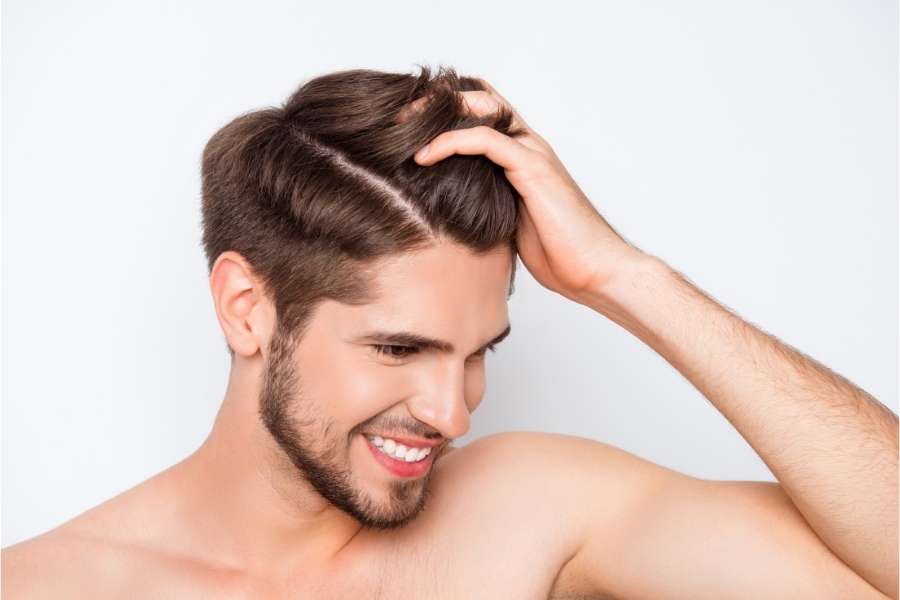People with fine hair or hair that tends to fall out can use the following strategies to boost hair volume. Patients who desire a permanent solution to conceal their bald patch due to significant hair loss undergo hair transplant surgery. Hair transplant surgery involves transplanting hair follicles from a healthy section of your scalp to balding areas. Many patients, including those with a familial history of baldness, have benefited from the operation in regaining their full crown of hair. On this page, we tell you all you need to know about the operation.
If you have baldness and see your trichologist for permanent treatment, you may be recommended to undergo hair transplant surgery if you meet specific requirements. A hair transplant is the best choice to overcome a bald patch if you have a healthy scalp capable of giving to the bald spots and can afford the surgery. You should expect your scalp to be painful for a few weeks following the surgery.
What is the procedure for hair transplant surgery?
The hair transplant procedure can be done under local or total anaesthesia. The procedure begins with an incision in your scalp’s donor site to extract a strip of the scalp with several follicular units. A follicular unit is a 1-4 hair-stranded section of the scalp. After that, the scalp strip is separated into several follicular units for grafting.
Depending on hair loss, normal pattern baldness will require anywhere from 1000 to 3000 grafts. The bald spots are covered with healthy hair grafts. The follicular units are put into the incisions that have been created in the bald area. The grafts adapt to the new scalp and can eventually stimulate hair growth.
After-surgery Care
Because incisions are made in both the healthy and bald areas of the scalp, the hair may become painful and numb. You may also notice some edema where the incisions have been made. Because the scalp has incisions, it will be covered with plaster or bandage for a few days.
To get rid of the pain, you may need to take pain relievers for a week. Excessive movement can damage the stitches in your scalp; therefore, your physical activity is also limited.
Within a few months of the surgery, the transplanted hair will fall out. The follicles will still be healthy; thus, this should not be a cause for concern. Healthy hair begins to grow in the transplanted area six months after the procedure.
Is Hair Transplant Surgery Right for You?
Hair transplant surgery has been shown to restore fullness to the scalp. If you have patches of baldness that are affecting your confidence, seek out a reputable surgeon and have the procedure done to restore your crowning splendour.
Aside from hair transplantation, there are some natural ways to increase hair volume.Let’s take a look at eight ways to make your hair grow faster and stronger.
Restrictive dieting should be avoided
Everything that affects your hair development is out of your control. However, there are some things you can avoid, such as dieting, which deprives your hair of essential nutrients and resources. Hair growth may be hampered, and shedding may increase as a result of these constraints. And, because hair growth isn’t given the same priority as other biological functions, it stops growing when you follow a rigorous diet or put your body under stress.
Consumption of protein
Consume a well-balanced diet that includes appropriate protein. We recommend 50 grams of protein or more per day for maximum hair growth. If you significantly restrict your diet, however, hair may not grow, and shedding may occur.
Caffeine-containing goods
Caffeine can give you an energy boost, but did you know that some studies have discovered that it can also help you grow hair? Caffeine may increase new hair growth in men and women at the cellular, molecular, and organ levels.
Essential oils are a type of oil that is used
Essential oils may also aid hair development—Peppermint oil promoted hair growth, dermal thickness, and follicle number and depth in a study. Also, rosemary oil may be just as good at restoring hair growth as minoxidil, the key element in Rogaine (medication).
Increase your nutritional intake
Vitamins, minerals, and fatty acids all have a role in general wellness. They’re also important for giving your body the energy it needs to grow hair.
For around six months, taking omega-3 and omega-6 supplements may help prevent hair loss. Reduced zinc levels in the body may also play a role in hair loss.
Massage of the scalp
A scalp massage can help you unwind and relieve stress. It can also help you grow more hair. Every day, give yourself a 4-minute scalp massage. Scalp massages cause blood vessels under your skin to dilate, resulting in thicker, stronger hair that is less likely to break or become damaged. You can either hire an expert or do it yourself at home.
Take-out
If you’re concerned about hair loss, several solutions are available to you, including medication and hair transplant surgery. Increasing hair volume is a time-consuming process that requires a lot of patience. However, if you follow our recommendations, you will be rewarded with healthy hair growth.















